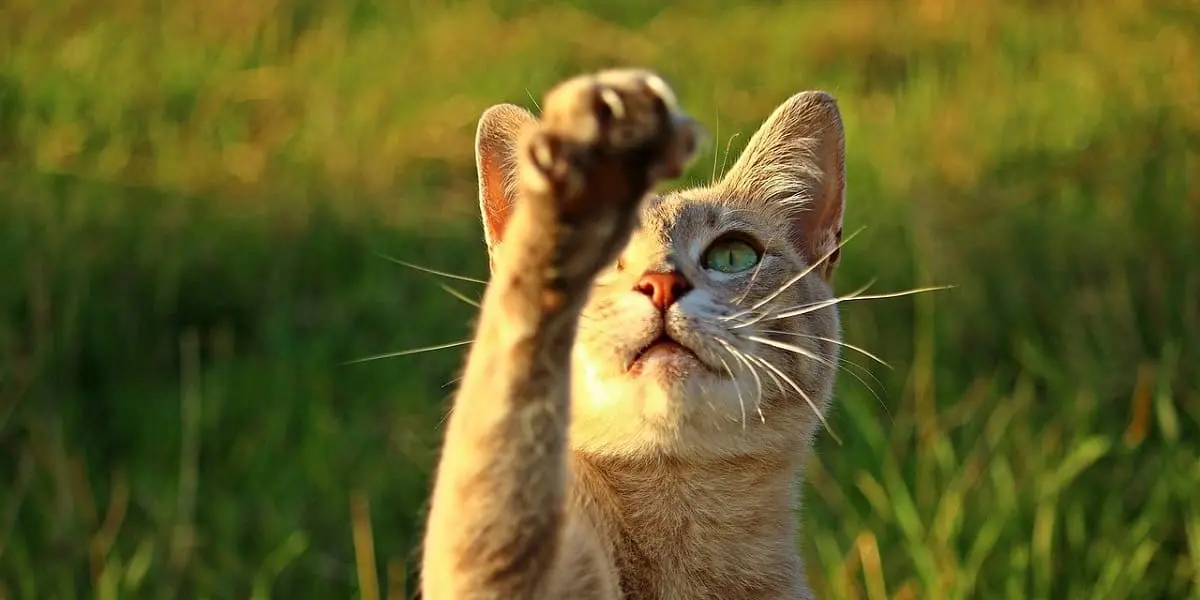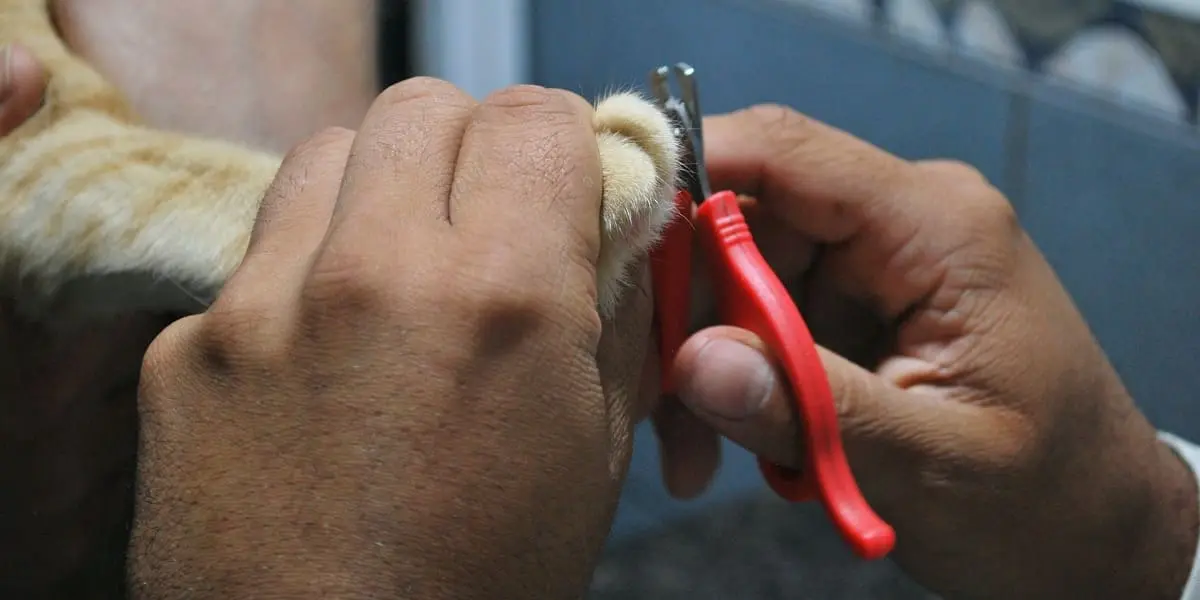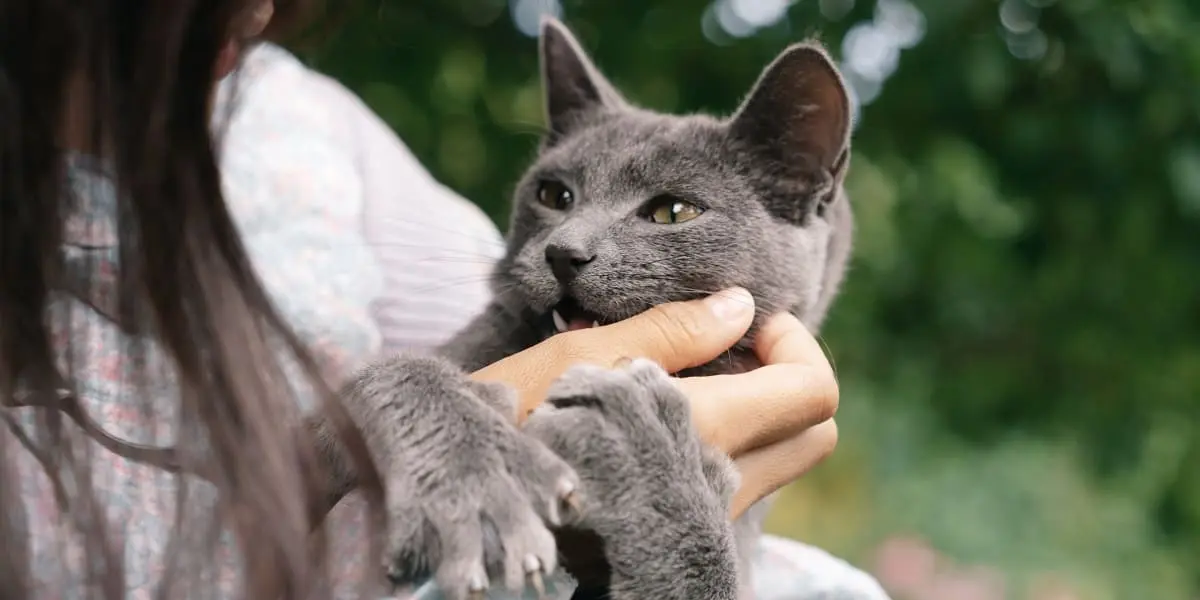Content
Cherishing a cat can sometimes be painful when it uses its teeth and claws, whether during petting or play, or even unexpectedly. You may wonder why this happens. Is it normal for a feline to bite and claw? How can you teach your pet to be gentler? Is the intervention of a veterinarian or behaviorist ever essential?
This article reveals the reasons why your cat may bite or scratch, and suggests ways to prevent and remedy these actions. You’ll also find recommendations on when to call in a professional. Note that your cat is not malicious; it simply communicates its needs, feelings and limits. A dose of patience and understanding will help you strengthen your bond and avoid injury.

Understanding the reasons for bites and scratches
Understanding why your cat bites and scratches is the first step to correcting this behavior. We can generally attribute his behavior to three main areas: communication, fear and play.
Communication or natural behavior
Body language is an essential means by which cats express their emotions, needs and limits. They use ear, eye, tail and posture movements, as well as vocalizations.
Biting and scratching may be their way of saying “enough petting”, “don’t touch me there”, “I want to play” or “leave me alone”. It’s more of a warning or request than an act of aggression.
Learning to interpret your cat’s signals, such as dilated pupils, floppy ears, flapping tail or bristling fur, can prevent defensive reactions on his part.
Fear, stress or pain: environmental and medical causes
Your cat may bite or scratch if it’s suffering from fear, stress or pain, whether due to environmental or medical problems.
Changes in his environment, sudden noises, the presence of other animals, illness or injury can all be triggers.
Be alert to any change in behavior, including loss of appetite, energy or excessive hygiene. In the event of unusual aggressive behavior, consult a veterinarian. If stress is the cause, provide your cat with a soothing, enriching environment with hiding places, toys, scratching posts and cat trees.
Play and aggression
Play is vital for cats, facilitating their physical, mental and social development, while teaching them the basics of hunting, communication and self-control.
However, a poorly socialized cat may not know how to moderate his strength and may unintentionally injure you during play. If you play with him using your hands or feet, he may identify them as prey.
To avoid this, use appropriate toys, such as balls, and stop the game if it becomes too rough.

Training tips and advice
If your cat has a tendency to bite or scratch and you’re wondering what to do about it, there are simple ways to educate it without traumatizing it.
We’ll explore three key strategies: reacting appropriately after a bite or scratch, using appropriate toys and distractions, and applying learning tricks to encourage good behavior.
How to react immediately to a bite or scratch?
When your cat bites or scratches you, it’s essential to remain calm. Avoid shouting or hitting your cat, as this may aggravate its aggressive behavior. Instead, calmly but firmly show him that his action is inappropriate by ceasing all interaction. Here are a few recommendations:
- Say a firm “ouch” or “no”, without raising your voice or making eye contact;
- Gently withdraw your hand or foot, without making any sudden gestures that might arouse his predatory instincts;
- Ignore him for a while, without touching, looking at or talking to him;
- Place him temporarily in a separate area equipped with water, food, a litter box and a bed to calm him down.
These tricks help the cat understand that unwanted behavior puts an end to attention and petting, and encourages him to control his reactions.
Appropriate toys and entertainment
Play allows cats to respond to their natural instincts. To prevent your cat from mistaking you for a target, offer him suitable toys and vary the activities to keep his interest.
- Avoid using your hands or feet as toys, and opt instead for toys that simulate prey.
- Alternate toys to avoid toy fatigue, and stimulate your cat with daily play sessions.
- Enrich his environment with objects such as scratching posts, cat trees, hiding places and interactive games to stimulate his senses and promote his well-being.
Appropriate toys and distractions will help your cat thrive and strengthen your bond, while preventing aggressive behavior.
Learning methods
Effective education is based on positive reinforcement, which means rewarding good behavior and minimizing attention to bad. Here are a few practices:
- If your cat bites or scratches, interrupt the activity and ignore or isolate him, following the method described above;
- When he plays or accepts petting without aggression, reward him with kind words, petting, treats or toys;
- Reward your cat when it uses its scratching posts or cat tree instead of attacking the furniture;
- Encourage your cat’s signs of appeasement, such as purring or kneading, with affectionate rewards.
By applying these learning principles, you’ll help your cat associate positive behaviors with pleasant reactions and avoid undesirable actions, for greater harmony at home.

When to consult a specialist?
You’ve followed our advice on training and reprimanding, but your cat persists in biting and scratching excessively and unpredictably.
A potentially more serious problem may lie behind this behavior, requiring the expertise of a professional. We’ll help you spot the signs of abnormal aggression in your cat, and show you how to get help from a vet or behaviorist.
We’ll also discuss the importance of socialization and behavioral interventions to prevent and treat these disorders.
Identifying the signs of pathological aggression
Aggression in a cat may simply be a means of communication, a response to fear or an element of play.
However, when aggression becomes intense, sudden and without obvious cause, it may be a sign of hormonal, neurological or psychological imbalance.
Your cat may attack its owner, another animal or even an object without warning and without displaying any calming behavior. It may also injure itself.
This type of behavior may indicate illnesses such as hyperthyroidism, epilepsy, rabies, feline leukemia, FIV, or behavioral disorders such as anxiety, depression or schizophrenia.
If you notice any of these behaviors in your cat, it’s essential to consult a veterinarian immediately, as it may be a medical or behavioral emergency.
Help from a vet or behaviorist
Your vet is the professional best placed to assess and treat your cat’s abnormal aggression. He or she can carry out a complete clinical examination and blood tests to identify any underlying disease and suggest appropriate treatment.
He can also recommend an animal behaviorist. This specialist can examine the psychological causes of your cat’s aggression and suggest personalized strategies. He can advise you on your cat’s environment, diet, play activities, sterilization, socialization and behavioral interventions.
A re-education program can be set up, aimed at encouraging positive behaviors, desensitization and counter-conditioning, to make your cat more serene, confident and sociable.
Socialization and behavior therapy
Socialization and behavioral interventions play a major role in the prevention and treatment of pathological aggression in cats.
Socialization involves accustoming cats to different environments, noises, people and other stimuli from an early age, thereby promoting their adaptability, communication skills and self-control, while reducing stress and anxiety. A properly socialized cat is less likely to adopt aggressive behavior in adulthood.
Behavioral therapies, used by owners, veterinarians or behaviorists, rely on positive or negative stimuli to encourage certain behaviors and suppress others. Techniques include play therapy, petting, click therapy and pheromone therapy, with the aim of encouraging desired attitudes in the cat and limiting or suppressing undesirable behaviors.
If you’re faced with a cat that acts aggressively by biting or scratching, it’s essential to understand and manage these behaviors. We’ve looked first at the potential causes of these acts, then at training methods and the right times to call in a professional. Here are the key points to remember:
- Cats express their feelings, desires and limits by nipping and scratching, which is their form of communication, even play;
- Understanding your cat’s body language is essential. Respect his warnings, stimulate him with appropriate toys and reward good behavior;
- Remain calm when your cat bites or scratches you. Express your disapproval with a firm “no” and suspend all interaction. Avoid physical or verbal punishment;
- An unusually aggressive, lively and unpredictable cat may be the sign of a medical or psychological complication requiring consultation with a veterinarian or cat behavior expert;
By applying these recommendations, you’ll foster a more harmonious relationship with your feline companion and avoid injury. Don’t let the problem get worse – take the initiative!
- Discover also
- My cat can’t urinate, what should I do?
